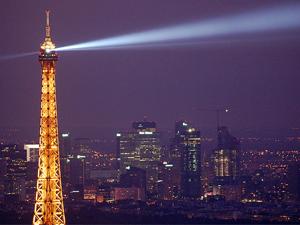 |
| Reviews and Templates for Expression We |
Energy Efficiency Big in Europe, Backed by Loans, Rebates
 MONACO, Monaco — In the face of rising energy costs and expected government mandates on energy efficiency, executives in Europe are putting a high priority on energy management in buildings, but struggling with funding, according to a survey.
MONACO, Monaco — In the face of rising energy costs and expected government mandates on energy efficiency, executives in Europe are putting a high priority on energy management in buildings, but struggling with funding, according to a survey.
Johnson Controls' fifth annual Energy Efficiency Indicator survey for Europe, released today, shows the main drivers and barriers related to energy improvements that companies and institutions in six countries are facing.
The 857 private- and public-sector executives from France, Germany, Italy, Poland, Spain and the United Kingdom said the main factors driving energy efficiency efforts are cost reductions, government rebates and energy security. Last year, cost savings was also a top driver, but the other two main influencers were greenhouse gas reductions and existing government policies.
Johnson Controls reports that more executives are now aware of rebates and other external funding opportunities, which will be key for companies looking at HVAC, window and other improvements.
"Most managers use internal capital or operating budgets to pay for improvements," the report says. "However, budgets are being cut across Europe, pointing to a bottleneck in funding for energy efficiency improvements. Cost-neutral and cash-flow-positive instruments to realize energy efficiency opportunities either are not available or are not being used by managers to the same extent as their own budgets. The result is a conundrum in which organizations may want to pursue energy efficiency and meet their reduction targets, but are stalled as they look to shrinking budgets as the only means to pay for projects."
Organizations that received funding from utilities, financial institutions and other outside sources were more likely to improve heating, ventilation, air conditioning and control equipment than companies relying only on internal budgets (55 percent, compared to 47 percent). And while 36 percent of organizations that sought external funding have made roof, insulation, window, weather stripping and other building enclosure improvements, only 19 percent of those that use their own budgets made similar improvements.
Organizations that were able to get external funding were also more likely to take up on-site renewable energy projects and install smart building technologies focuses on real-time energy monitoring.
More executives this year than last (61 percent versus 55 percent) said that energy management is either extremely or very important to their organizations.
A large majority of the executives surveyed think that energy prices will go up over the next 12 months (79 percent) and that governments will create energy efficiency or greenhouse gas reduction mandates in the next two years (78 percent).
Some lesser-cited barriers to energy efficiency include uncertainly about savings or performance from projects, lack of technical expertise on evaluating projects and lack of awareness about opportunities.
"Johnson Controls' long history of improving efficiency in buildings for customers, such as the retrofit project at the Empire State Building, demonstrates there are solutions and technologies readily available to reduce energy use and greenhouse gas emissions," Iain Campbell, vice president and general manager for Johnson Controls' Global Energy and WorkPlace Solutions, said in a statement. "This iconic project is proof that significant cost and emission reductions can be achieved when innovative solutions are pursued." The project is expected to cut the Empire State Building's energy use by 38 percent and save $4.4 million a year.
Johnson Controls' survey of European executives is part of its 2011 Global Energy Efficiency Indicator survey, which will be released, with results from 4,000 respondents from Europe, North America, China and India, June 16 at the 22nd annual Energy Efficiency Forum in Washington, D.C.
Published May 11, 2011
|
|
|
|
Copyright 2011 Energy and Technical Services Ltd. All Rights Reserved. Energyts.com |